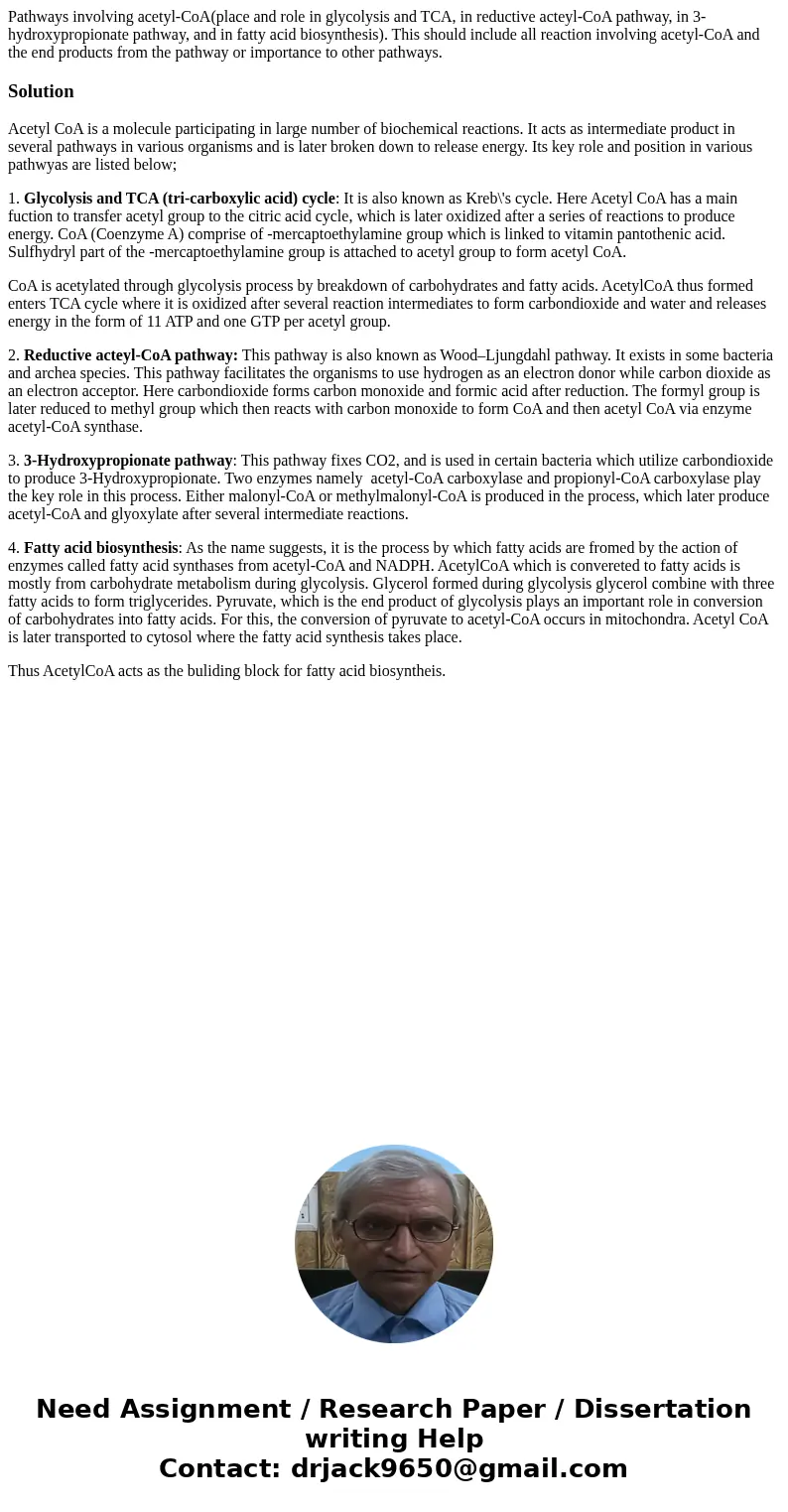Pathways involving acetylCoAplace and role in glycolysis and
Pathways involving acetyl-CoA(place and role in glycolysis and TCA, in reductive acteyl-CoA pathway, in 3-hydroxypropionate pathway, and in fatty acid biosynthesis). This should include all reaction involving acetyl-CoA and the end products from the pathway or importance to other pathways.
Solution
Acetyl CoA is a molecule participating in large number of biochemical reactions. It acts as intermediate product in several pathways in various organisms and is later broken down to release energy. Its key role and position in various pathwyas are listed below;
1. Glycolysis and TCA (tri-carboxylic acid) cycle: It is also known as Kreb\'s cycle. Here Acetyl CoA has a main fuction to transfer acetyl group to the citric acid cycle, which is later oxidized after a series of reactions to produce energy. CoA (Coenzyme A) comprise of -mercaptoethylamine group which is linked to vitamin pantothenic acid. Sulfhydryl part of the -mercaptoethylamine group is attached to acetyl group to form acetyl CoA.
CoA is acetylated through glycolysis process by breakdown of carbohydrates and fatty acids. AcetylCoA thus formed enters TCA cycle where it is oxidized after several reaction intermediates to form carbondioxide and water and releases energy in the form of 11 ATP and one GTP per acetyl group.
2. Reductive acteyl-CoA pathway: This pathway is also known as Wood–Ljungdahl pathway. It exists in some bacteria and archea species. This pathway facilitates the organisms to use hydrogen as an electron donor while carbon dioxide as an electron acceptor. Here carbondioxide forms carbon monoxide and formic acid after reduction. The formyl group is later reduced to methyl group which then reacts with carbon monoxide to form CoA and then acetyl CoA via enzyme acetyl-CoA synthase.
3. 3-Hydroxypropionate pathway: This pathway fixes CO2, and is used in certain bacteria which utilize carbondioxide to produce 3-Hydroxypropionate. Two enzymes namely acetyl-CoA carboxylase and propionyl-CoA carboxylase play the key role in this process. Either malonyl-CoA or methylmalonyl-CoA is produced in the process, which later produce acetyl-CoA and glyoxylate after several intermediate reactions.
4. Fatty acid biosynthesis: As the name suggests, it is the process by which fatty acids are fromed by the action of enzymes called fatty acid synthases from acetyl-CoA and NADPH. AcetylCoA which is convereted to fatty acids is mostly from carbohydrate metabolism during glycolysis. Glycerol formed during glycolysis glycerol combine with three fatty acids to form triglycerides. Pyruvate, which is the end product of glycolysis plays an important role in conversion of carbohydrates into fatty acids. For this, the conversion of pyruvate to acetyl-CoA occurs in mitochondra. Acetyl CoA is later transported to cytosol where the fatty acid synthesis takes place.
Thus AcetylCoA acts as the buliding block for fatty acid biosyntheis.

 Homework Sourse
Homework Sourse